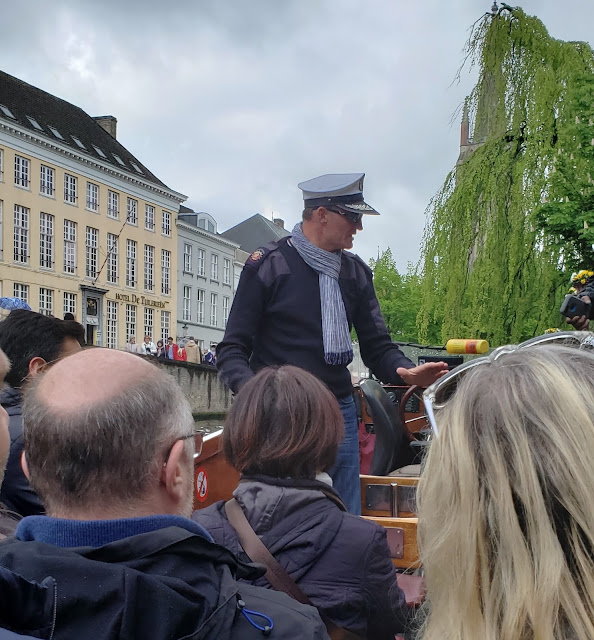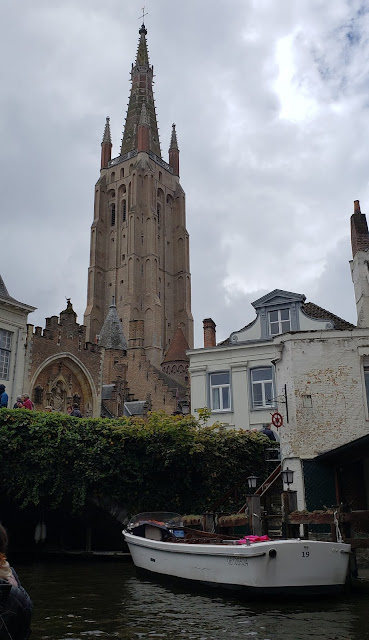We have 9am museum tickets, so we’re out early. London is a later town, so the streets are
quiet on this cool sunny morning. We get
to the mall, the long, wide boulevard that runs from Buckingham Palace to
Trafalgar Square and it’s eerily empty. The
palace, so packed with people for yesterday’s Changing of the Guards, rests, exposing
the beauty of the manicured gardens. We slip
into St. James Park, the huge green space bisected longways by a quiet lake. At the eastern edge of the park we come
across the exotic birds, gifts to the royals over the centuries. Today, the park’s famous pelicans are sunning
themselves on the rock formations in the middle of the water, posing for our
pictures and making me wish we had carried our longer lens.
Out of the serene park and into rush of the morning commuters
streaming out of the tube. We only fight
the crowds long enough to score some coffee, then double back out of the fray. Promptly at 9, we are let into the Churchill
War Rooms, the underground bunker where Winston Churchill and his staff ran Britain’s
war effort. Because the government’s
defense buildings were such obvious Nazi targets, Churchill had a maze-like work
and living complex built deep below Whitehall (now Her Majesty’s Treasury) and
fortified beneath with several feet of reinforced concrete. He and his staff would spend weeks at a time
in the space, planning, strategizing and executing their war plan. The tight working/living quarters made for
some very unusual moments between the proper secretarial staff and hard-charging
military men, most of those moments involving attempts at modesty around bed
and shower times. The radio room,
perhaps the most important space in this important space, was crucial to communicating
the leadership’s commands to the field.
Churchill also used this equipment to deliver some of the most important
speeches of the war over the BBC airwaves.
The Cabinet War Rooms became operational in August of 1939 and were
occupied 24 hours per day until August 16th, 1945. On that day, the lights were turned off and doors
were simply padlocked. Decades later,
someone finally realized the historical significance of the labyrinth, the
doors unsealed, and a careful inventory of the contents was performed. In 1984, the War Rooms were opened to the
public as a museum. It’s a place so
complete and authentic that the sense of history is tangible. It’s easy to imagine yourself stationed in this
claustrophobic space, cut off from family and friends and sunlight, immersed in
the most important work of a generation.
We are moved by our visit, and we find ourselves strangely relieved when
we emerge into the daylight after only 90 minutes or so.
We’re only in town for a few days and we know it’s a fool errand
to try to see the whole of London in such a short period of time. It was our plan to just stick to the
neighborhoods close to the hotel and see other parts on future trips. Walking after the museum, we change
courses. London’s double decker busses
are the stuff of legend, so we think that if we’re ever going to do a hop-on/hop-off
tour bus around a city, this is probably the place. We buy our tickets and regret our decision as
soon as we board. The bus is very
crowded and there are no seats on the upper deck. After a few stops, we do secure seats
upstairs. The seats are too small, the kids
too loud and the tour guide inaudible. Traffic
is awful, more stop then go, which would be OK except that the stop is dictated
by the traffic, not by the location. That
means that our bus zipped by points of interest and made long stops at random
places with none. The trip did take us by
the Tower of London and over the London Bridge, but overall this type of sightseeing
has been removed from our playbook.
We get off the bus by Big Ben, currently being held prisoner in
a shroud of scaffolding, only his big face visible. It’s afternoon in London, time again for tea. Mandy has researched tea services and on the
top her list is Fortnum and Mason, a luxe gift and gourmet food shop cleverly disguised
as a 5-story department store. We head
to the top floor Diamond Jubilee Tea Salon.
This is more indulgent then yesterday at the Orangery, more swank. Our waiter was top notch, doting on us,
explaining the menu and making suggestions with an easy sense of humor. We order two different services, a traditional
sweet and a savory, so we can try more things.
Of course, the optional Champaign is mandatory for us. Two of the traditional three-tier trays
appear, finger sandwiches, scones and desserts from bottom to top, and our
waiter explains each item on each plate.
These are more modern, more refined and foodie, then the classic dishes
we had yesterday. More tapas than snack,
served on their famous robin’s egg blue china.
Our favorites are the Crab Salad, topped with cheese mousse and served
in a perfectly sheared eggshell and the Coronation Chicken, a curried chicken
salad finger sandwich with a slightly sweet finish. Our waiter offers us “refills” and we pick a
few faves even though we’re near bursting.
The people watching is great and we enjoy the scene as much as the
food.
We need to walk. What
better place to start then the four floors below us. I head to men’s accessories and choose a
fantastic pair of socks at an embarrassing price. I don’t find Mandy until the first floor,
where she’s tea shopping. About half the
first floor is dedicated to the leaf and we spend half an hour picking just the
right blends. Out into Piccadilly we
have fun admiring the architecture, window shopping and generally being in
London. I don’t remember a trip where we
have walked, and enjoyed it, this much. A
well-earned nap ensues.
Our last night in London we have three goals: a proper pint in a
proper pub, traditional English food in a (different) proper pub, and one more
bar we have heard about. Finding a good
pub in London is a pretty easy task, se we just pick one with good energy and where
we can get a seat near the bar. It’s
different then the American bar scene, but you can see how one evolved from the
other. We’re sampling tonight so we
wander to find our next stop. It’s a busy
Tuesday, the weather is nice, and it seems that every pub and restaurant spills
out onto the street, guests through open doors and windows and onto café tables. We get a table at restaurant on the edge of Piccadilly
and Soho and order a couple of pints and the fish and chips. The classic, deeply fried, piping hot and
very satisfying in that crispy sorta way.
After dinner, we walk to the end of Greek Street and into Milroy’s, a whiskey
bottle shop selling fine brown liquor from around the globe. Walk past the tasting bar, hang a right at the
back wall and give the bookcase a mighty shove.
Aided by a big weight on a pully system, the bookcase swings away giving
access to a flight of stairs. Walk down
and we’re greeted into The Vault, a basement speakeasy with an unpretentious
staff serving finely crafted cocktails.
Dark walls, dim lighting and cool jazz set the scene and we let the
friendly bartender mix at his pleasure.
His drinks are complex and delicious, his conversation engaging, and we
feel right at home. We linger a bit
longer after our drinks, enjoying our final night here.
(click the pictures to view full screen)

































































